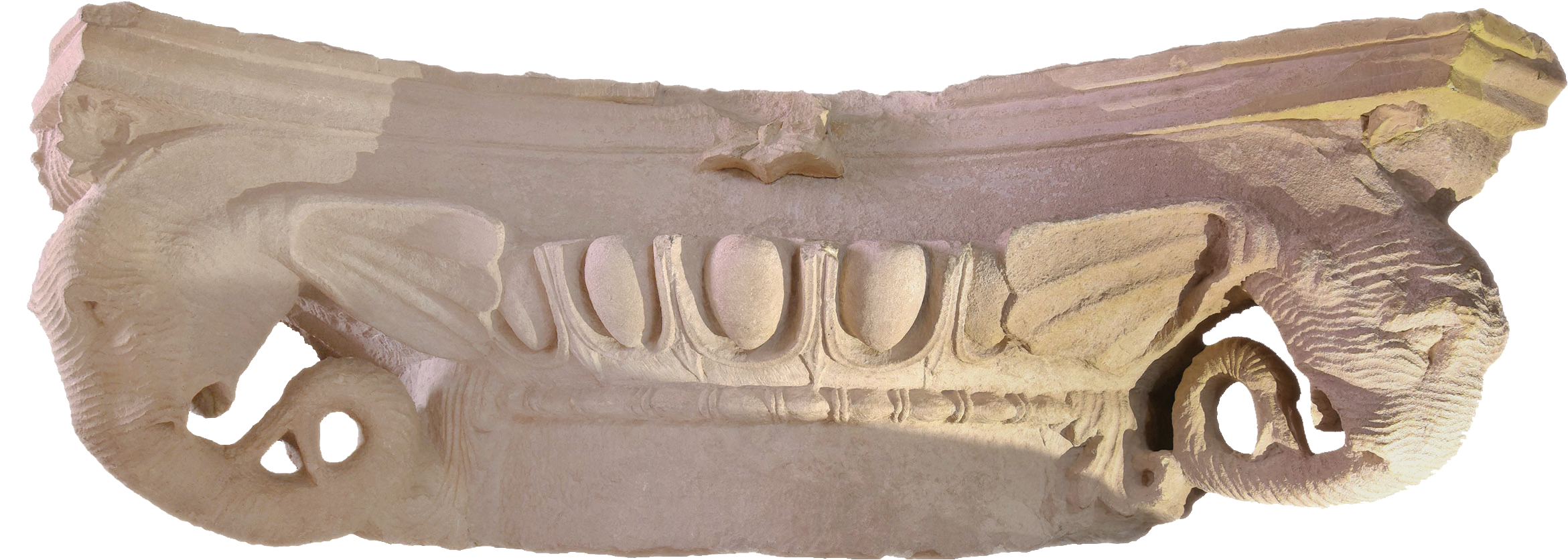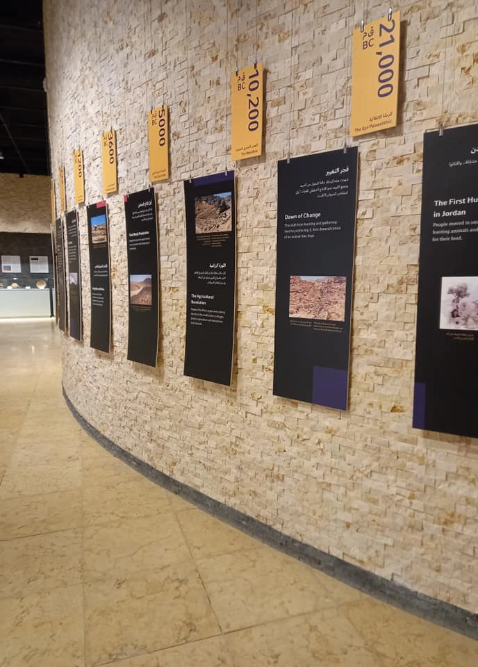Gallery 3: Active Nabataeans
The Nabataeans, Arab nomadic tribes who arrived from Arabia, amassed wealth through trade between the Arabian Peninsula and the Mediterranean world, establishing the Nabataean Kingdom and the city of Raqmu (Petra). While maintaining their own traditional culture, they also absorbed various cultures they encountered through trade. This exhibit shows the history and cultural interaction of the Nabataeans through the display of artifacts such as statues, that show the influence of Greek, Roman, and Egyptian culture as well as Arabic traditions, and AV telling the rise and falls of the Nabataeans from the 6th century BC to the 2nd century AD.
- Endless Tides of Nabataea
- Nabataean Cultural Interaction
- Nabataean Art Styles
- Arabian Idols
- Raqmu-Petra and Egypt
- Main Temples of Raqmu-Petra
Goddess of Hayyan

This sandstone stelae, known as the "Goddess of Hayyan," was excavated from the Temple of the Winged Lion in Petra, and dates to the first half of the first century AD in the Nabatean period.
It was originally placed in a niche inside the temple. It depicts a stylized face in the Arabian style of Nabataean art.
The eyes of the stelae were originally inlaid probably with semiprecious stones. The cavity at the centre of the laurel crown may have contained attributes of the represented goddess, such as decorative elements or gem materials.
The Nabataean inscription on the base notes who is represented; ”The Goddess of Hayyan, son of Nayibat”.

Elephant Capital

The Nabataeans used the Classical architectural orders of their time period.
They, however, added their own touches such as replacing the Classical volutes with heads of elephants on this large limestone Ionian capital, which was original covered with plaster and brightly coloured.

Details of the trunk, facial features and ears indicate that these were African elephants.
Raqmu-Petra, The Great Temple
Nabataean (1st century AD)
 For Audio Guidance, please Click here
For Audio Guidance, please Click here





